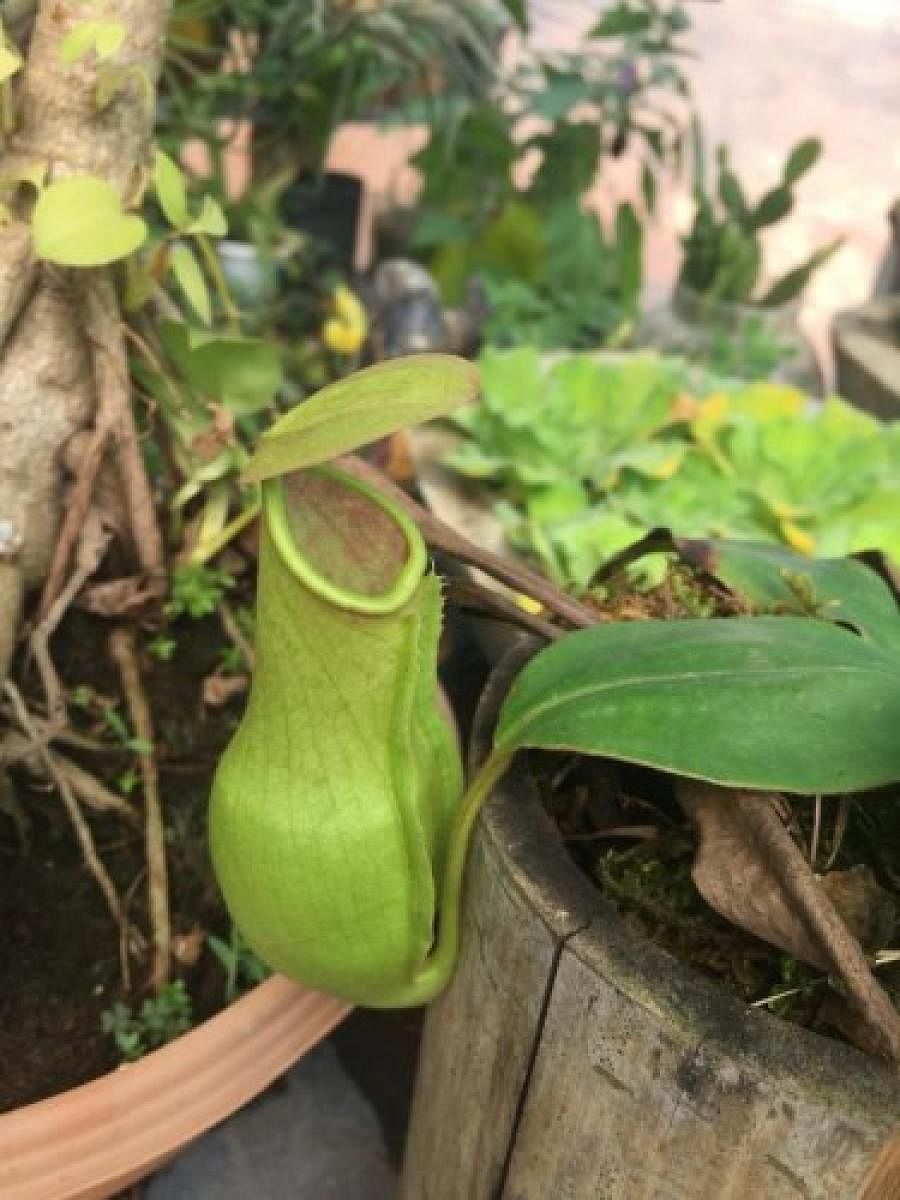
Nepenthes khasiana is a pitcher plant native to India growing on the slopes of Meghalaya. In the loose organic debris of the forest floor or sometimes on the crooks of tree branches, these evergreen shrubs hold a passive trap, into which insects fall to drown in a soup of digestive juices. The trap hangs on tendrils from the ends of beautiful, glossy and green leaves.
But over the past few decades, the fascination towards this insect-devouring plant has grown so much that over 40% of the wild population has vanished in the last 50 years, according to experts. For a unique plant such as this, that surely is a warning sign — that the deadly trap of extinction could inch closer if attention is not given to secure its habitat and protect the species itself.
Medicinal value
N khasiana Hook F is found in Khasi Hills, Jaintia Hills and Garo hills in areas where the nitrogen deficit soil makes a perfect habitat for the pitchers to pitch their cups and derive nutrients from other sources, namely the insects.
This particular carnivorous plant is known by many vernacular names in Meghalaya. The Khasis call it as Tiew rakot – meaning demon flower. The Jaintias as Ksete-phare meaning a device for trapping insects. The Garos call it Memang-Koksi meaning a basket of devil. The varying names suggest how the plant’s existence here is intertwined with the culture and history of each ethnic tribe of Meghalaya. And while they have compared the plant to devil when it comes to naming, the locals have also come to understand and appreciate the true worth of this plant through centuries of ethno-medicinal practices.
The fluid of the unopened pitcher of N khasiana is used by Khasis and Garos as eye drops to cure cataract and night blindness. The pitcher is also made into a paste to cure skin ailments including leprosy. Be it stomach ailments or headaches, eye infections or diabetes, there is a cure for an array of ailments hidden in the jug-shaped plant, believe the tribe elders. While medicinal prescription of the plant is growing in popularity, the greater harm is coming to its population simply because of the curiosity attached to an insectivorous plant.
In Meghalaya, an area of 250 sq km is mainly the thriving habitat of the plant from where the species is collected and sold at the rate of Rs 50 to Rs 100 per plant in Shillong and other towns of the state for horticultural use. It is also sent to other states of India, and to colleges and universities as a classroom study material. N khasiana has been included in the Appendix-I of CITES (Convention on International Trade in Endangered Species of Wild Fauna and Flora) but the international and national trade laws are easily ignored as the species is unsustainably poached from its natural habitat to adorn biology labs and private collector’s gardens.
Anthropogenic pressures
The trouble also lies in the human-induced changes that have been brought to the habitat of N khasiana. Over the last few years, the pristine hillsides of Meghalaya have been eroded by several coal, lime mines and new roads cutting through the hillock. Jhum cultivation, animal grazing, and forest fires have led to population depletion in crucial habitats of the plant. Like all other wilderness areas of the country, the original habitat is getting fragmented leading to lesser and lesser plants growing within them.
There have been efforts to conserve the endangered species. The Botanical Survey of India has established an ex situ germplasm of N khasiana collected from different natural habitats of the state for conservation. Tissue culture of the plant has also begun to produce plants in the lab and later grow in protected environments of the East Khasi hills.
However, the overzealous collection of the wild plants is outpacing the rate of new growth and in situ cultivation. If the threat to the natural habitat remains unabated, there are chances that a species that represents ancient endemic remnants of older floras of the northeast could perish soon. India’s only pitcher plant needs less attention as a classroom display material and more protection in its native home.